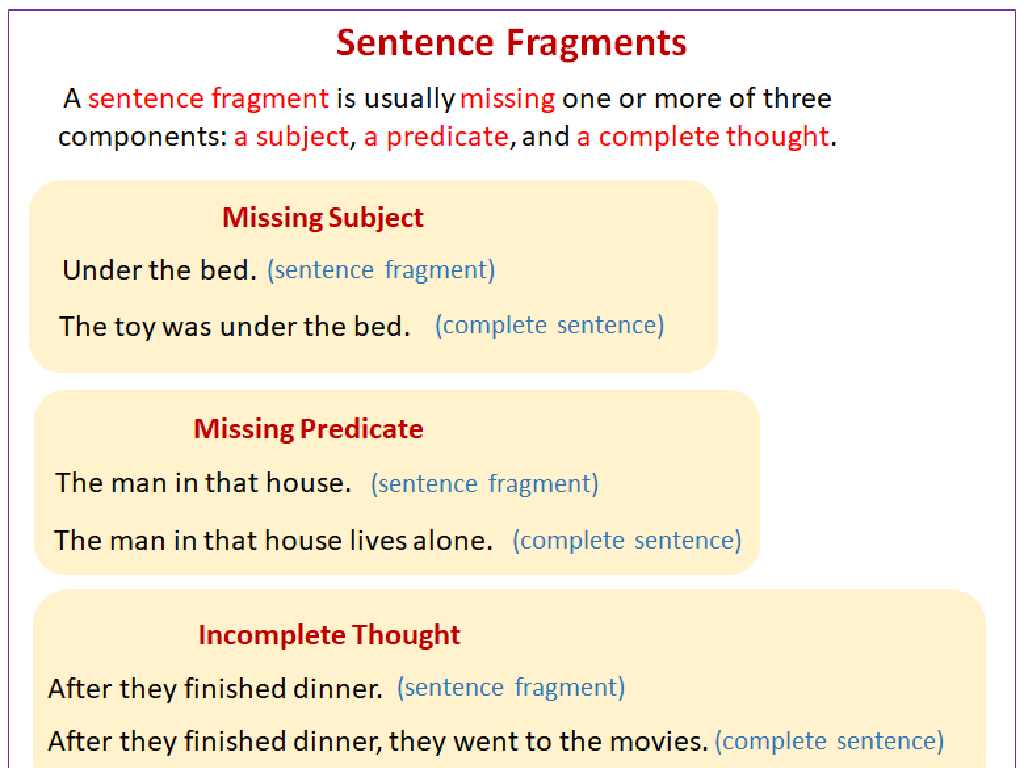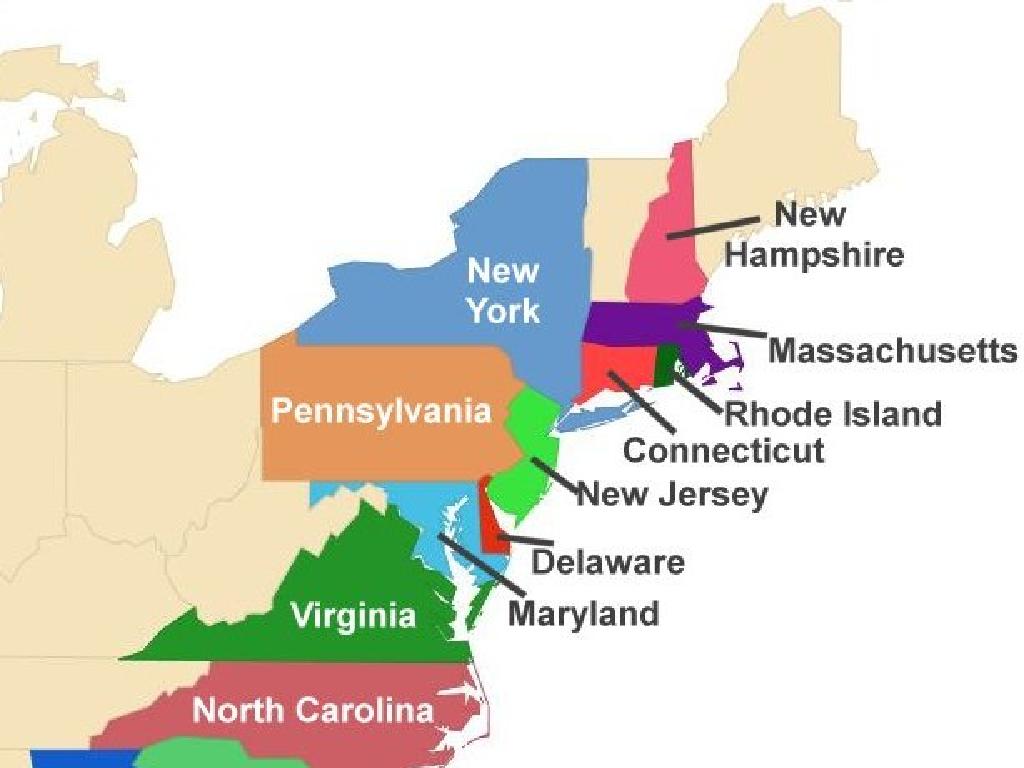Add Four Or More One-Digit Numbers
Subject: Math
Grade: Second grade
Topic: Addition: One Digit
Please LOG IN to download the presentation. Access is available to registered users only.
View More Content
Welcome to Addition!
– Becoming addition experts today
– Adding four one-digit numbers
– Example: 3 + 4 + 5 + 2 = ?
– Counting and adding can be fun
– We’ll use games and activities
– Practice makes perfect
– We’ll do lots of practice together
|
This slide is designed to introduce second-grade students to the concept of adding multiple one-digit numbers. Start by creating excitement about becoming ‘addition experts.’ Explain that they will learn to add not just two, but four or more numbers together. Use interactive activities such as counting objects, using number lines, or playing addition games to make the learning process engaging. Encourage students to practice repeatedly, as this will help them become more comfortable with the concept. Provide plenty of examples and ensure to give positive feedback as they progress.
Understanding Addition
– What is addition?
– Addition means putting numbers together
– Adding numbers together
– When we add, we combine two or more numbers
– Like adding apples in a basket
– Imagine you have a basket and keep adding more apples
– Counting the total number
– After adding, we count to see how many we have in all
|
This slide introduces the concept of addition to second-grade students. Start by explaining that addition is the process of combining two or more numbers to find the total amount. Use a relatable example, such as adding apples to a basket, to help them visualize the concept. Emphasize that after we add the numbers (or apples), we count them to see how many there are altogether. Encourage the students to think of other examples where they might add things together in their daily lives. This will help them understand that addition is not just a math skill, but a useful tool in everyday situations.
Adding One-Digit Numbers
– Start with adding two numbers
– Example: 2 + 3 equals what?
– Combining numbers gives a new number
– When we add 2 and 3, we get 5!
– Practice with an example: 4 + 1
– Try adding 4 and 1 on your own
– Understand addition is combining
|
This slide introduces the concept of addition as a way of combining numbers to get a new number. Start by showing students a simple addition problem, such as 2 + 3, and explain that when we combine 2 and 3, we get 5. This sets the foundation for understanding that addition is about combining quantities. Encourage the students to practice with another example, 4 + 1, to reinforce the concept. Make sure to explain that addition is not just about counting forward but understanding that two separate amounts can be put together to make a larger amount. Use manipulatives or visual aids if necessary to help students grasp the concept of combining numbers.
Adding More Than Two Numbers
– Start with 2 + 3 + 4
– First add 2 and 3 to make 5
– Combining the first two numbers makes it easier!
– Then add 4 to get 9
– 5 + 4 equals 9
– Adding in any order gives same total
– This is called the commutative property of addition
|
This slide introduces students to the concept of adding more than two one-digit numbers. Start by demonstrating with a simple example, 2 + 3 + 4. Explain that by adding the first two numbers (2 and 3), we simplify the problem to 5 + 4, which equals 9. Emphasize that the order in which we add numbers does not affect the total, an important property of addition known as the commutative property. Encourage students to practice with different sets of numbers and to verify that changing the order of addends does not change the sum. This will help them understand addition’s flexibility and build confidence in solving similar problems.
Let’s Practice Addition Together!
– Start with 1 + 2 + 3 + 4
– First, add 1 + 2
– What does 1 + 2 equal?
– Next, add 3 to the sum
– Now, what is 3 + 3?
– Finally, add 4 for the total
– Add 4 to get the final sum!
|
This slide is an interactive class activity designed to help second-grade students practice the skill of adding four one-digit numbers. Begin by presenting the problem 1 + 2 + 3 + 4 and guide the students through each step. Encourage them to add the first two numbers, then add the next number to the sum they just calculated, and continue this process until all numbers are added. Ask the students to participate by solving each step aloud and writing down their answers. The goal is to help them understand the concept of cumulative addition and to build their confidence in solving addition problems. Possible variations of the activity could include using different sets of numbers, pairing students to solve together, or using manipulatives like counters or number lines to visualize the addition process.
Addition Tips and Tricks
– Group numbers to make ten
– Like 5 + 5 to quickly reach 10
– Find easy pairs to add
– Like 2 + 3, which makes 5
– Double-check by recounting
– Ensure your sum is correct
– Practice with different numbers
|
This slide is aimed at helping second-grade students learn strategies to add four or more one-digit numbers efficiently. Encourage them to look for pairs of numbers that add up to ten, as this is a foundational concept in arithmetic. Also, guide them to identify pairs that are easy to add together, such as 2 + 3 or 1 + 4. Emphasize the importance of double-checking their work by counting again to confirm the sum. Provide various examples and encourage them to practice these tips with different sets of numbers to build their confidence and improve their addition skills.
Class Activity: Addition Relay!
– Form groups for the relay
– Receive a set of number cards
– Add the numbers together quickly
Use your addition skills to find the total sum.
– First group to add correctly wins a star!
A fun reward for teamwork and quick addition!
|
This activity is designed to encourage teamwork and practice addition skills in a fun, competitive setting. Divide the class into small groups and provide each group with a set of number cards. Each group will work together to quickly add the numbers on their cards. The teacher should monitor the groups to ensure that the addition is done correctly. Possible variations of the activity could include using different sets of numbers for each group, timing each group to see who completes the task the fastest, or having a relay where each student adds one number before passing the cards to the next team member. The goal is to reinforce the concept of adding one-digit numbers in a way that is engaging for second graders.
Great Work on Addition!
– Excellent work with addition today
– Remember: Practice is key
– Keep practicing at home
– Try adding numbers during playtime
– Share your skills with family and friends
– Teach what you’ve learned to others
|
This slide is meant to congratulate the students on their hard work during the lesson on adding one-digit numbers. It’s important to encourage them to continue practicing in order to solidify their understanding and improve their skills. Suggest that they incorporate addition into their daily activities, such as adding up toys during play or helping parents with simple calculations. Encourage them to teach a family member or a friend how to add numbers, which will reinforce their own knowledge and build their confidence. Provide some simple and fun addition exercises that they can do with others at home.






